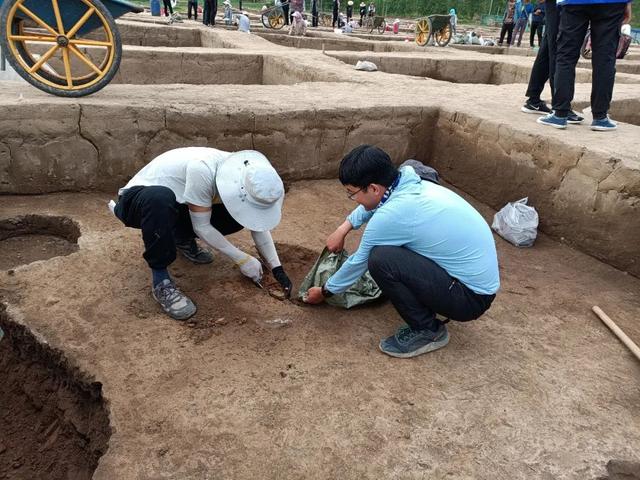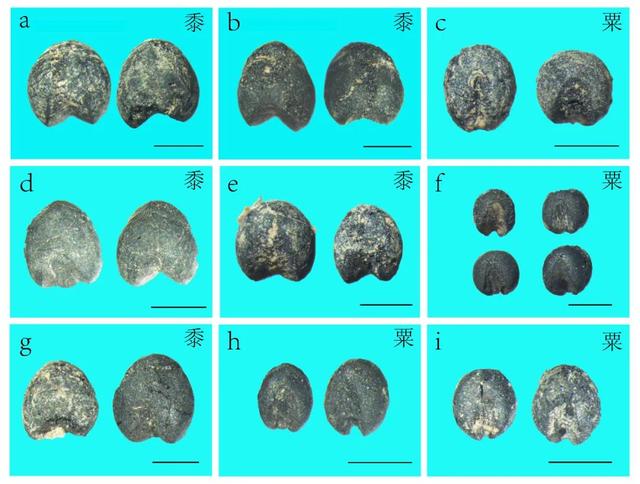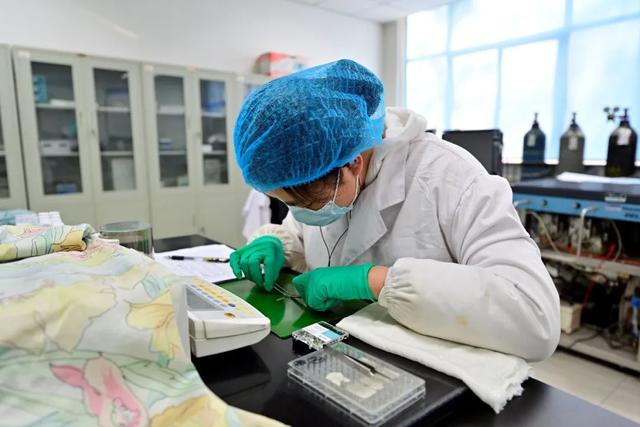5500 years ago, they had begun to plant mainly planting millet
Author:New Gansu Time:2022.08.14
About 5,500 years ago, the main planting crops in the western part of the Loess Plateau in the western part of the Loess Plateau appeared from coriander to millet. This shows that the prehistoric humans at that time had begun to engage in drought agriculture dominated by millet. The new study was completed by the team of Associate Professor Ma Minmin of the School of Resources and Environment of Lanzhou University and the scholar of the Gansu Provincial Institute of Cultural Relics and Archeology.

Members of Ma Minmin's team sampled at the Sinchuan site. Interviewee confidence
According to Ma Minmin, the origin and development of Su Zuo Agriculture is one of the most important economic foundations that support the development of Neolithic culture and early social complexity in my country. The Loess Plateau in my country is one of the key areas for the strengthening and diffusion of Agricultural development in Su Zuo. The process of agricultural development and production and lifestyle changes in the prehistoric era is a hot scientific issue that has attracted much attention.
Ma Minmin said: "The academic community generally believes that about 10,000 years ago, the millet is domesticated and utilized in northern my country. In the central and eastern parts of the Loess Plateau, the agriculture of the millet becomes the main production method of human production from 7000 to 6000 today. This 6000 years ago, the main plantation was mainly planted, and 6000 years later, the main plantation began to grow. The intensive millet agriculture appeared late in the west of the Loess Plateau. Only agriculture has been strengthened. Due to the lack of evidence of annual measurement of millet relics, the time and process of the transformation of the planting structure of the Loess Plateau is unclear. "
In response, the Ma Minmin team carried out research on plant archeology and bone stabilization isotope analysis in the west of the Loess Plateau. Based on the carbon fourteenth -year -old annual and plant archeological research on the Western Loess Plateau, combined with archeology and ancient environmental evidence, the team system sorted out the process of the development and strengthening of the agricultural development and strengthening of the new stone in the new stone era.

This is the carbonized plant relic unearthed from the Sagawa site. Interviewee confidence
The latest research of the team shows that 6100 years ago, prehistoric humans began to engage in agricultural production in western Loess Plateau. About 5,500 years ago, the main planting crops in the western part of the Loess Plateau appeared from the transformation of the main planting crops of the Loess Plateau. Because the output of millet was significantly higher than that of the ,, the transformation of the agricultural planting structure promoted the rapid growth of the agricultural population and expanded to the west.

Members of Ma Minmin's team handles bone collagen samples in the laboratory. Interviewee confidence
According to reports, these research work helps deeply understand the development of prehistoric agricultural development in the northwestern region of my country, provides new evidence for understanding the social environment of early social complexity, and discussing the prehistoric survival strategy, social development and environmental changes. The interaction relationship has important academic value. Related research results have recently been published in journals such as "Forefront of Botanical Science". (Reporter Zhang Wenjing)
Reading Reading
On August 10th, Gansu newly added 1+6, specifically here → Gansu's health travel code has been upgraded. Are you get to get? collect! Lanzhou Chengguan District Normal Ruodrine Sample List list is announced
- END -
Onlookers##
Recently, the China Economic Weekly new media platform published an article The top 10 fiscal revenue in the first five months of the country, the top of Guangdong, and the Zhejiang counterattack
The added value of the digital economy accounts for nearly 50 % of GDP!Stable on the market, Zhejiang has "numbers"

Zhejiang News Client reporter Xia Dan correspondent Zheng MinhongThe No. 1 Project...